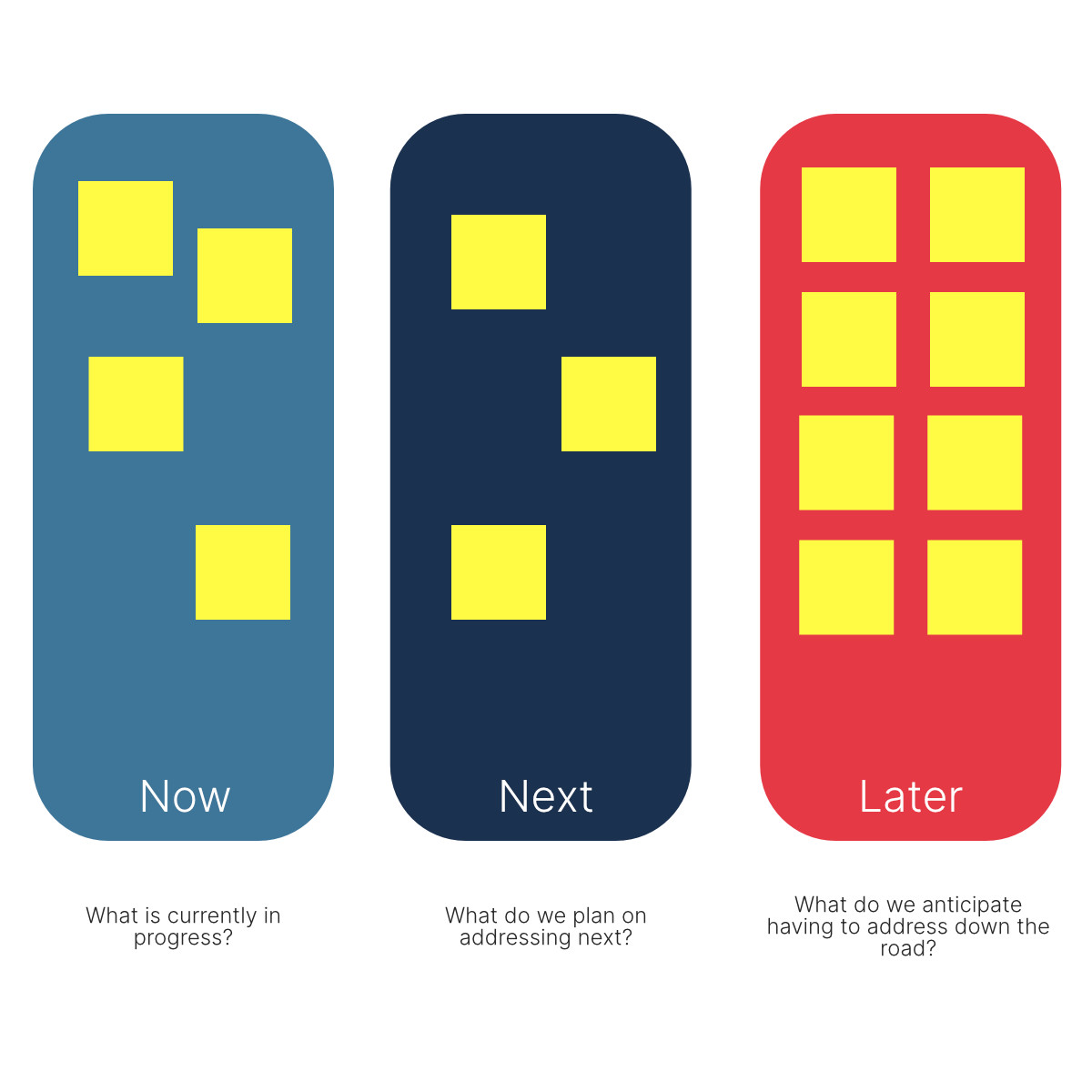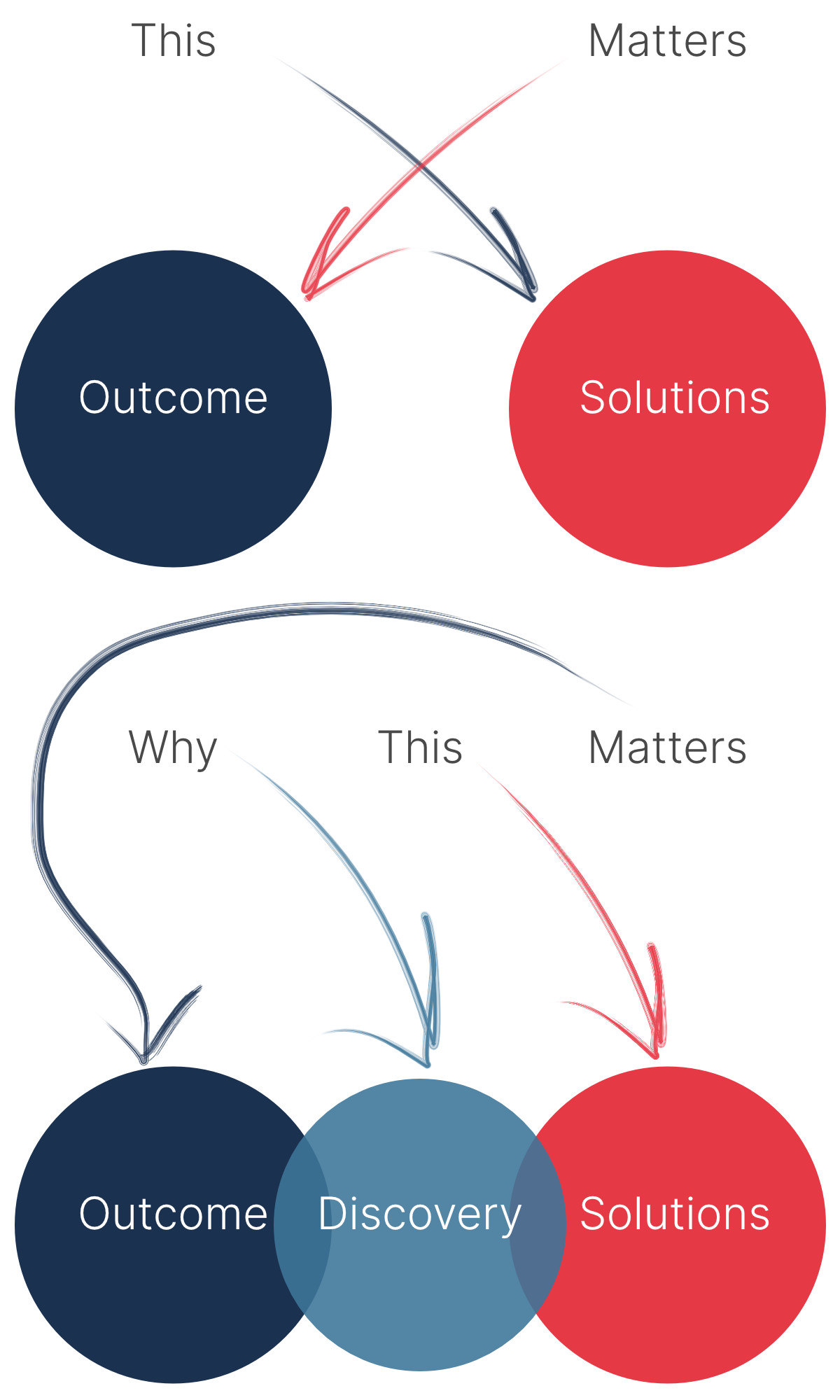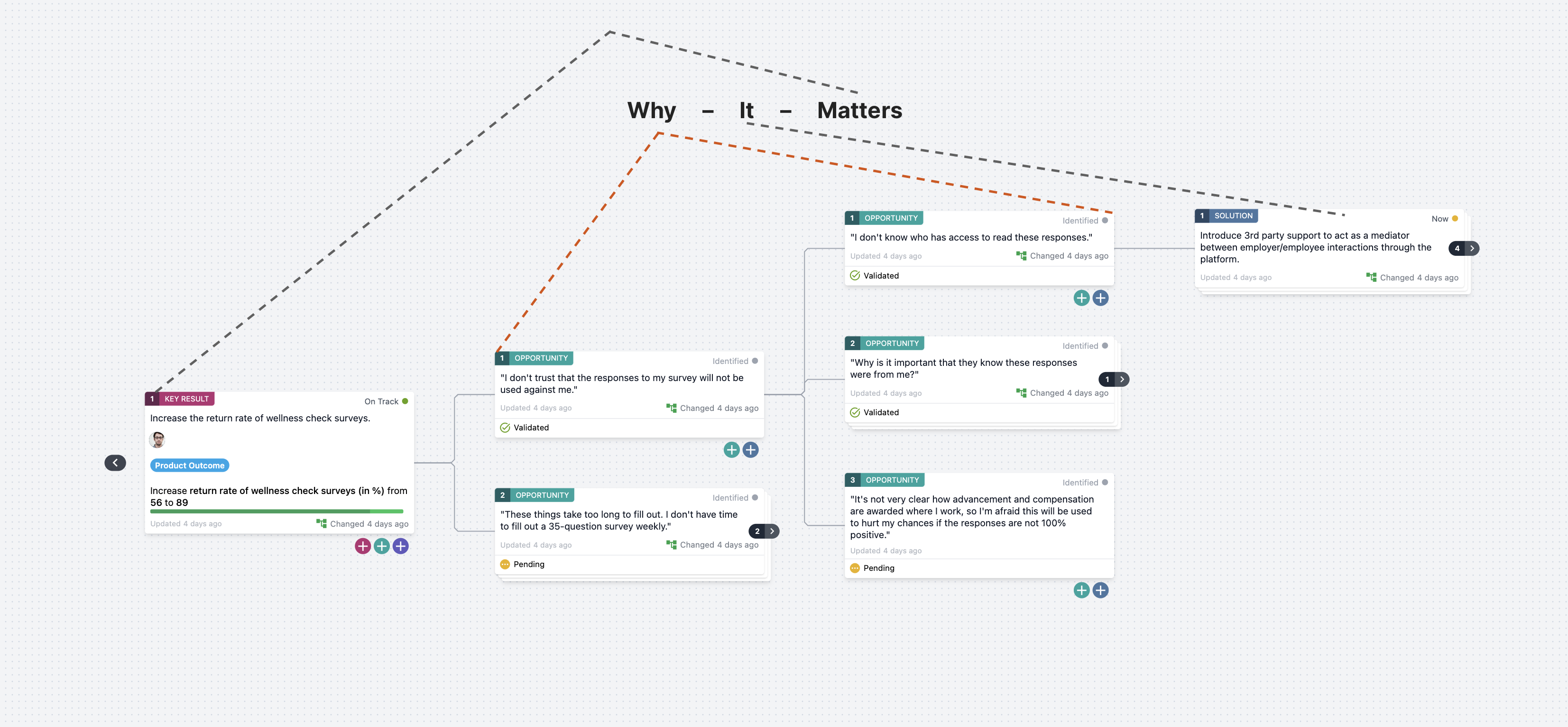What does it take to put any feature into any roadmap?

Nothing
Take the first idea, add it to a list, put it into now/next/later columns if you'd like, and call it a day. 😅
Outcome-based roadmaps set expectations for the value work should create, but they don't:
- Dictate how and why solutions belong there.
- Show expectation of value.
- Take assumptions into account.
- Assist in breaking down overly large concepts into smaller faster-to-ship features.
But, they provide an excellent point of reference for why work is valuable (if validated) and its relative priority in the delivery process.
If you've shipped enough products or features, you know that they can end up providing way more value than expected or way less. When they offer less, it's far too common for features to remain in the product piling up technical debt over time and confusing the value proposition. What's interesting is that several high-performing teams put significant effort and thought into unshipping features to improve the value of their products. [1]
How can you reduce the need for unshipping features?
Bridging the Gap Between Outcomes & Delivery
Discovery is the bridge that spans the gap between outcomes and delivery. It's the evidence that justifies how an investment should pay off.

It may take a little up-front time, but way less time than planning, developing, shipping, and unshipping a feature or product.
We are massive believers in visualizing work. Visualizations help bring others along on the journey and allow them to critique and collaborate more effectively. So, making discovery efforts tangible (like solutions are in a Now/Next/Later roadmap) can provide the physical evidence needed to make better decisions and discuss opportunities, trade-offs, and specifics.
Visualizing Discovery
Opportunity Solution Trees (OSTs) are excellent visual artifacts for collecting, organizing, and prioritizing discovery work. [2]

OSTs are continuously evolving visual artifacts, allowing discovery to happen simultaneously alongside delivery. They provide an anchor point for well-informed conversations around prioritization and help focus the scope of possible solutions.
Does your product process account for discovery?
How tangible is your discovery process? Is it easily sharable, and does it fuel effective conversations?